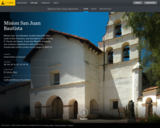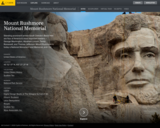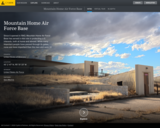
1634 CE - 1666 CE, Power of the Mughal Empire expressed through Religious Architecture
- Subject:
- Architecture
- Arts and Humanities
- CTE
- World history
- Date Added:
- 06/06/2017


1634 CE - 1666 CE, Power of the Mughal Empire expressed through Religious Architecture

1770 CE - 2017 CE, Mission San Carlos Borromeo del RÃÂÂo Carmelo

1823 CE - 1834 CE, Mission San Francisco Solano

1797 CE - 1835 CE, Mision San Juan Bautista de Ligui

1776 CE - 1834 CE, The oldest standing, intact, adobe building dedicated to Christian workship.

1798 CE - 2017 CE, The King of Missions: Mission San Luis Rey de Francia

1215 CE - 1400 CE, The Monastery of the Spear

500 BCE - 800 CE, Capital of the Zapotec Empire: Founded in 500 BCE and continuously inhabited for over twelve hundred years, Monte Albán was the ancient capital of the Zapotec culture and is one of the oldest-known urban cities in Mesoamerica. The civic core is centered around a plaza and most of the city's great monumental structures are built in its vicinity. It is estimated that approximately 30,000 people lived within a six-kilometer radius of this center during the city's peak in the 6th century CE. Sometime between 700 and 800 CE, the ruling Zapotec lineage at Monte Albán collapsed, construction halted, and the city fell into decline. Today, the site remains a source of great pride for the peoples of Oaxaca, particularly the Zapotec-speakers that still farm the fields on the valley floor below.

1927 CE - 2011 CE, National Legacy in Stone

1943 CE - 2014 CE, Home to 366th Fighter Wing

1830 CE - 1976 CE, Johnson and Melrose House of the American South

1786 CE - 1968 CE, Utopian Village of the Industrial Revolution

1964 CE, The 1964-65 New York World's Fair (NYWF), with over 51 million attendees, was the last of the ‘great' Fairs held in the United States. For the price of a $2.00 admissions ticket, a Fairgoer could glimpse into the nation's history, discover art from around the world, view advances in science and technology and peer into the future, all in one compact locale. Many of the technologies we enjoy today, or the foundations that made them possible, were showcased at the 1964-65 NYWF.

6000 BCE - 600 BCE, Flourishing Capital of the Assyrian Empire

1125 CE - 1850 CE, Scotland's Medieval and Neoclassical Capital

438 BCE- 500 CE, The Parthenon: The temple of Athen's patron goddess

900 BCE - 146 BCE, The amphitheaters found around the Mediterranean are one of the most important legacies left from ancient civilizations. Their architecture, acoustics, and quality of structure give clue to their social importance and craftsmanship. As important as they were historically, they are equally as important now to the living legacy from tourists to local performers. However, it is also this continued interest that has become a contributing factor to the deterioration of these sites. ATHENA Project

1064 CE - 1500 CE, The Leaning Tower of Pisa

700 BCE- 79 CE, Legendary Italian City Destroyed by Mt Vesuvius

1776 CE - 1994 CE, Spanish Fort in the Heart of San Francisco